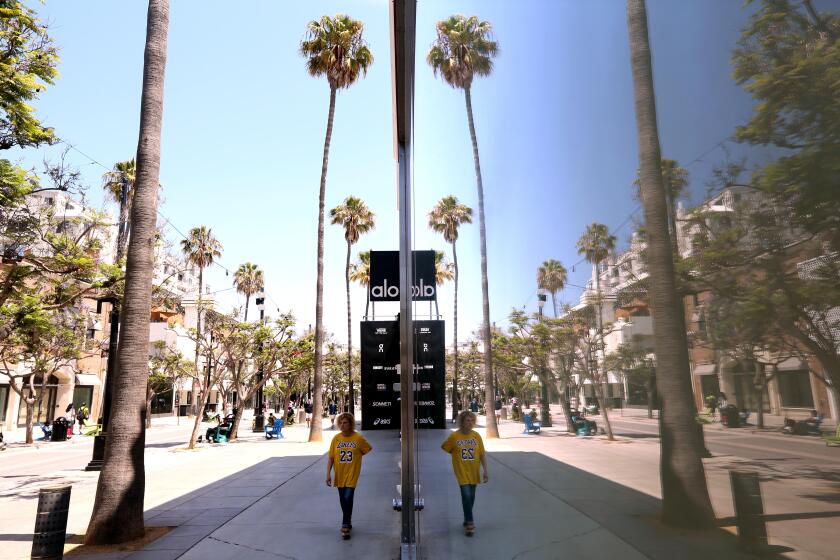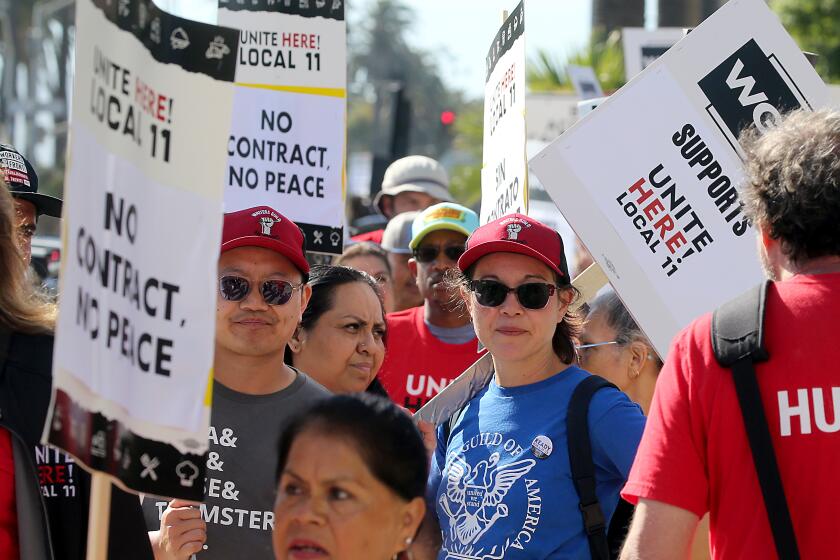Burn Centers May Lose a Key Tissue Bank : Medicine: Facility that is $140,000 in debt and unable to pay some workers seeks private funding to avert closure.
One of the nation’s oldest skin banks, which has served as a key supplier of tissue for Los Angeles’ burn and trauma centers, might be forced to close soon because of soaring costs and a shortage of donors.
The Southern California Tissue Bank, which opened in Torrance 13 years ago and has provided skin and organs for more than 1,000 burn and trauma patients, is seeking support from oil refineries and other companies that would be directly affected by the organization’s demise. But skin bank officials say it may be too late.
“We’re not crying wolf,” said Dr. Allen McDaniels, medical director of the nonprofit organization. “The only thing that has kept us open is that we’ve managed to earn enough goodwill in the medical community over the years so that we’ve been able to postpone making some payments. We’re in desperate financial shape.”
Burn specialists say the potential loss of the skin bank could place the region’s burn centers, which have suffered millions of dollars in losses due to the high cost of patient care, in an even more precarious position. Because burn centers already face a shortage of skin for their patients, the closure of a key donor bank could have serious consequences for the region’s burn and trauma care network, officials say.
The skin is used by surgeons to protect burn patients from bacterial infection and to help them retain fluids after severe burns. The donated skin is usually used on patients burned over more than 50% of their bodies and is left in place until the patient’s skin can be grafted to cover the wounds. Permanent grafts must be made with the patient’s own skin.
“It would be a significant loss,” said Dr. Neal Koss, medical director of the Burn Center at Torrance Memorial Medical Center, where the skin bank started before becoming a private nonprofit corporation in 1986. “With so many burn units hovering on the verge of bankruptcy, to lose an essential supplier like the skin bank would have serious consequences.”
McDaniels said the tissue bank is about $140,000 in the red. He blamed the financial crisis on a declining pool of skin donors and the difficulty in getting timely reimbursements from major clients such as County-USC Medical Center, which houses the largest burn center in the Los Angeles area. In addition, skin bank officials say they have been hurt by competition from other organ banks.
The officials said they have no idea how long the bank can remain open if it does not receive some funding. “Reasonably, we should have been closed long ago,” McDaniels said. “We take it a day or a week at a time.”
Housed in a nondescript industrial park, the small Torrance agency has scrambled for years to balance its budget while trying to locate enough donors for the region’s three burn centers. The tissue bank has nine employees, some of whom have been working without a paycheck for months, officials said. Some employees have other part-time jobs but the rest have been working out of “pure dedication and goodwill,” McDaniels said.
Besides supplying skin for Los Angeles County’s three burn centers--Torrance Memorial Medical Center, Sherman Oaks Community Hospital and County-USC Medical Center--the skin bank also procures bones and organs for trauma patients.
Tissue bank technicians collect skin from cadaver donors at hospitals and morgues and bring it to the Torrance facility for screening, processing and storage. The skin is stored in liquid nitrogen freezers and shipped to hospitals after doctors call in with emergency orders.
Officials at the skin bank cite the irregular demand for donor skin as one of the reasons for their unsteady cash flow. In addition, the need in recent years to perform more screening of skin because of concerns about hepatitis, AIDS and other diseases has greatly increased costs, they say.
McDaniels also said competition from agencies such as American Red Cross Tissue Services has affected the Torrance organization. Rather than working together, he said the Red Cross has often insisted on taking major organs such as hearts and kidneys from donors first, greatly reducing the amount of skin available for transplants.
Skin bank officials complained that the Red Cross also has signed agreements with numerous hospitals that once offered cadaver donors to the Southern California Tissue Bank.
But Jan Waller, who heads tissue services for the Los Angeles County chapter of the Red Cross, said the hospital agreements were signed to make it easier for medical facilities and families of donors.
“Anytime you’re working with a donor in a crisis situation, the simpler you make it, the better it is for the families,” she said. “Our letters of agreement are not exclusive. But many hospitals prefer to work with just one agency.”
Torrance skin bank officials say the competition for organs has hurt agencies in major cities around the country. But they say they have been especially hard-hit because they receive no public subsidies or outside contributions at a time when their costs are continuing to rise.
And that worries burn surgeons. “There just aren’t a lot of skin banks,” Koss said. “I can’t say that we would have difficulty treating burn patients, but I wouldn’t want to be in the position of finding out.”
McDaniels said the skin bank received tissue from about 170 donors in 1991, a decline from previous years when up to 190 donors gave tissue. He said that if the Torrance center were to close, the region’s burn centers might not be able to keep pace with the demand for donor tissue.
“In burn cases, response time is critical, and if you lose patients because there isn’t enough skin around, that would be a tragedy. Surgeons would be forced to use some synthetic product, and that is not like the gold standard that cadaver skin is.”
More to Read
Inside the business of entertainment
The Wide Shot brings you news, analysis and insights on everything from streaming wars to production — and what it all means for the future.
You may occasionally receive promotional content from the Los Angeles Times.








